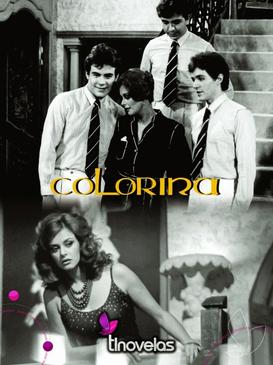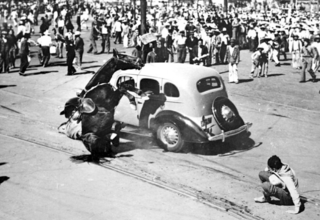
Lázaro Cárdenas del Río was a Mexican army officer and politician who served as president of Mexico from 1934 to 1940. Previously, he served as a general in the Constitutional Army during the Mexican Revolution and as Governor of Michoacán and President of the Institutional Revolutionary Party. He later served as the Secretary of National Defence. During his presidency, which is considered the end of the Maximato, he implemented massive land reform programs, led the expropriation of the country's oil industry, and implemented many key social reforms.

Osvaldo Dorticós Torrado was a Cuban politician who served as the president of Cuba from 1959 to 1976. He was a close ally of Cuban revolutionary and longtime leader Fidel Castro.

Roque Victoriano González Garza was a Mexican general and politician who served as acting President of Mexico from January to June 1915. He was appointed by the Convention of Aguascalientes during the Mexican Revolution, and had previously been an important advisor to President Francisco Madero and a member of the Chamber of Deputies. He was later a founder of the anti-communist, xenophobic, antisemitic, nationalist Revolutionary Mexicanist Action party and its leader from 1933 to 1934.

The Mexican Democratic Party was a Catholic social conservative political party in Mexico that existed between 1979 and 1997. At its height in 1982, the party had over 500,000 active voters and 12 seats in the Mexican Chamber of Deputies.

The Mexican Communist Party was a communist party in Mexico. It was founded in 1917 as the Socialist Workers' Party by Manabendra Nath Roy, a left-wing Indian revolutionary. The PSO changed its name to the Mexican Communist Party in November 1919. It was outlawed in 1925 by the government of Plutarco Elías Calles and remained illegal until 1935, during the presidency of the leftist Lázaro Cárdenas. The PCM saw the left wing of the nationalist regime that emerged from the Mexican Revolution—i.e. Cárdenas and his allies—as a progressive force to be supported. The PCM disappeared after helping form the Party of the Democratic Revolution, a split from the PRI led by the son of Lázaro Cárdenas, Cuauhtémoc Cárdenas.

The National Synarchist Union was a Mexican political organization. It was historically a movement of the Roman Catholic extreme right, similar to clerical fascism and Falangism, implacably opposed to the policies of the Institutional Revolutionary Party (PRI) and its predecessors that governed Mexico from 1929 to 2000 and from 2012 to 2018. The organization was notably the only explicit right-wing movement in Mexico to garner such nation-wide support and influence during this era. At its peak in 1940, there were approximately 500,000 registered members. Mostly active in the late 1930s and early 1940s, its support for the Axis in World War II damaged its reputation. The organization experienced intense infighting in the mid-1940s which ultimately led to multiple schisms. The organization was dissolved as a political party in 1951 and largely faded into obscurity outside the city of Guanajuato, where it retained some local influence. In the 1980s, the UNS was reconstituted as the Mexican Democratic Party, which held seats in the Chamber of Deputies from 1979 to 1988, peaking at 12 Deputies in the 1982 election but losing its presence in 1988; the Mexican Democratic Party (PDM) dissolved in 1997, though two groups both claiming to be the legitimate UNS continued to exist.

The Communist Party of Mexico is a communist party in Mexico. It advocates internationalism of the proletariat, Leninist organizational theory based on democratic centralism, and Marxism-Leninism.
The Revolutionary Mexicanist Action, better known as the Gold Shirts, was a Mexican fascist, secular, anti-Semitic, anti-Chinese, anti-communist, ultra-nationalist paramilitary organization, originated in March 10, 1934 in Mexico City and operated until disbanded in 1936. With ultra-nationalist, strikebreaking roots and Nazi German support, the organization sought to expel Chinese, Jews, and communists from Mexico. The organization often violently engaged with labor movements associated with the Mexican Communist Party and with labor strikers.

Nicolás Rodríguez Carrasco was a Mexican general, revolutionary, and the founder and leader of the fascist paramilitary organization Revolutionary Mexicanist Action, better known as the Gold Shirts.

The Nationalist Front of Mexico, formerly known as the Organization for the National Will and the National Mexicanist Front, is a neo-fascist activist organization in Mexico.

General elections were held in Mexico on 7 July 1940. The presidential elections were won by Manuel Ávila Camacho, who received 94% of the vote. In the Chamber of Deputies election, the Party of the Mexican Revolution won all but one of the 173 seats.
The Mexican People's Party was a political party in Mexico, founded in 1977. PPM was led by Alejandro Gascón Mercado. PPM was mainly based in the Nayarit and Jalisco states.
The Mexican Fascist Party was a very minor political party founded in Mexico City in December of 1922 by Gustavo Sáenz de Sicilia. Officially based upon Italian Fascism, the party members drafted a manifesto entitled Manifiesto del Partido Fascista Mexicano a la Nación.

Colorina is a Mexican telenovela produced by Valentín Pimstein for Televisa in 1980. It was a remake of La Colorina, while remakes of Colorina are Apasionada and Salomé.
Ernesto García "El Chango" Cabral was a Mexican cartoonist and painter, famous for his contributions of caricatures to the publication Revista de Revistas; his work numbers almost 25,000 pieces.
Events in the year 1960 in Mexico.
Electa Arenal, born as Elena Electa Arenal y Huerta, was a Mexican artist, known best as a muralist painter, and sculptor.

The 1935 Revolution Day Zócalo Battle was a violent conflict that broke out during the Revolution Day festival of 1935 at the Zócalo between members of the Revolutionary Mexicanist Action and multiple organizations associated with the Mexican Communist Party. Members of the Revolutionary Mexicanist Action parading through the square were met by individuals associated with the Mexican Communist Party with the latter antagonizing the former. The brawl lasted about an hour and resulted in 46 to 50 injuries and 3 casualties. Among the wounded was Nicolás Rodríguez Carrasco, leader of the Revolutionary Mexicanist Action.
Hernán Laborde Rodríguez was a Mexican communist politician.
Sicilia is a surname. Notable people with the surname include:














